
So you love drawing so much you want to make it a habit. I feel the same, and I spent a great deal of time researching how to do it and succeed at it. After all that research, I decided to share my system with the world and help other artists make drawing a habit. So how do you do it?
To make drawing a habit, you need to establish a time frame to draw, familiarize yourself with the actions that precede drawing, draw, reward yourself for the effort, sleep well, and repeat. Making drawing a habit is more about making it easier to do rather than fighting against it every day.
On paper, it could be simple, except it isn’t. So the secret behind making those things happen is understanding how to do them. In this blog, I will provide you with all the steps you must follow to make drawing a habit, various tools, and concepts that will help you achieve it, plus a 21-day, image-packed drawing plan at the end of the steps to make your drawing habit stick.
All the information in this blog is based on my 16-year drawing experience, how I achieved making drawing a habit, and recent peer-reviewed scientific papers about habit creation.
- Excellent review on the science of habits – Link to the study
- Meta-analysis of habits – Link to the study
How To Make Drawing a Habit?
When I started researching this topic, I went overkill about learning the behavioral science and psychology of habit creation, not only for drawing, so this blog will include much of that (in a not-boring way, I promise!). I did it because we all struggle to create any habit, even if you love it, so I needed to know the core.
As I said in the beginning, creating a drawing habit is more about making it easier instead of relying on willpower alone to do it constantly. And to do it, you need to create a reliable system and environment that helps you draw more easily. And for that, here are your five steps to achieving that.
1- Connect Habits You Already Have to Drawing
The easiest way to make drawing a habit is to connect it to something you already do. This habit you already do must be something you do with zero to no resistance, meaning a strong habit. For example, taking a shower: if you were to draw every time right after you take a shower, taking a shower would eventually trigger your desire to draw.
Concept: Andrew Huberman, a Stanford professor, created the concept of limbic friction to define the energy needed to overcome the anxiety, procrastination, and fatigue our mind has to overcome to get into a focused and productive zone. Limbic friction is lower after 1 to 8 hours of being awake and higher after 8 hours.
Take action: Since doing anything during the first 8 hours of being awake is easier, find a habit you do every day within that time. The habit you pick will also define when in the day you start to draw. You can still connect drawing to a habit you do after those hours, but you should know it will be a little harder to connect. Here are a couple of habits you could connect to drawing:
- Drinking a cup of coffee
- Having breakfast
- Making your bed
- Taking a shower
- Wearing clothes
Once you do this, go to the next step.
2- Visualize Yourself Drawing
Now that you have picked a habit you do every day without exception, you need your brain to familiarize it with starting to draw. But that’s easier said than done. To do it, you need to use the tool provided by the studies: Applying procedural memory visualizations. There is a lot of evidence of how easy it becomes for people to create new habits after doing this just once.
Tool: The exercise consists of closing your eyes and visualizing every action required to start drawing. The starting point of the visualization should be the habit you picked previously or before, and it should conclude with the act of drawing.
This visualization exercise involves different brain areas related to goal pursuit, and it’s an exercise that, incredibly enough, you only need to do once for it to start working.
Take action: Do the visualization exercise as vividly as possible without leaving details behind. It should look like this (my personal routine to start drawing): enter home, prepare breakfast, take a shower, wear my clothes, prepare an espresso shot, pour it into my blender cup with some ice, add milk and a little sugar, blend, serve, go to my room, sit down in my desk, take my sketchbook and pencil, start drawing. Needless to say, you have to engage in all these actions, but you will see it will be much easier than before.
I was much more specific with the coffee preparation because there are days when I’m already home or have taken a shower, had breakfast, etc. But I would very, very rarely start drawing without coffee, so preparing it makes me crave drawing.
All right! Now that you have done this exercise, it’s time to go to the next step.
3- Reward Yourself
There cannot be any habit creation without rewards. Most of our actions come from the desire to achieve or win something. If we talk about drawing, we want to practice every day because we want to draw better, create unforgettable characters or things that haven’t been thought of before, or maybe get a job in the art industry; whichever your goal is, achieving it will feel like a reward. These rewards keep people working towards a college degree or going to the gym, and we need to make them part of our habit-creation program.
The rewards can be anything you choose, but most of them are not very effective. For example, if you want to reward yourself with a piece of chocolate every time you draw for a certain amount of time, it is very easy to eat the chocolate without completing the goal. And on top of that, it is a reward that would eventually start feeling insufficient.
The good news is that the scientific papers did their part in figuring out the best reward: the one that comes only when you have already drawn. You need to interiorize that consistently drawing is a challenge of its own, and even though it was hard to get into it, you had the power and will to do it. How would you feel after being the person that sets the goal of achieving something and actually achieve it?
By becoming a person who feels that drawing is the reward itself, you will tune your brain into wanting to draw more and more.
Take action: Once you have finished your drawing session, reward yourself because you could do it, and acknowledge you’re becoming the artist you want to be. This will activate your reward system and help your brain associate drawing as a valuable action.
It may sound more like a self-positive talk type of advice, but the science behind it is solid, and I can tell you it has worked wonders for me and how I identify myself. Now let’s go for the next step.
4- Get Enough Sleep
Just like with rewards, there cannot be a habit-creation discussion without getting enough sleep. That’s because 70% of our waking behavior is habitual, and it turns out that everything we do while awake gets consolidated when we sleep. And for your brain to install a new habit, it has a “break” another one; you need lots of energy for that to happen.
On top of that, not being well rested will increase your limbic friction toward doing anything. It’s not a myth that you are less likely to do anything when you feel tired. So consolidating a new habit without sleeping enough will be much more challenging than it could be if you sleep enough.
Take action: Allow yourself at least 7 hours to sleep. Drawing requires focus, constant decision-making, and problem-solving, so give your body the rest it needs to produce excellent line work. Not only will it help you make drawing a habit, but it will also help you learn faster and feel better!
Now it’s time to repeat, but since that’s easier said than done, look at the drawing plan I made so you can stick to drawing without missing a day!
5- Follow a Convenient Plan You Can Repeat
We are finally at the last step of this loop plan. The only way to make drawing a habit is to draw every day or very regularly. Although the instruction is simple, we trick ourselves into failing to achieve our goal.
The reason why this happens is because of a lack of structure and convenience. It is much harder to start drawing when you don’t know what to draw or practice after sitting down. You could deviate from drawing if you have to figure out what to do every time you sit down.
That’s why I developed a 21-day drawing plan you can follow to make your drawing habit stick. I made it 21 days long because that’s about how much it takes many people to create new habits under the right circumstances.
Take action: Create a solid structure you can follow daily for at least 21 days, reevaluate and repeat. As far as you have a structured plan of what to do, you don’t have to follow my drawing plan. A good tip is to start with some drawing warm-ups every time you sit to draw; that way, you can start drawing immediately without thinking about it.
21-Day Plan To Make Drawing A Habit
I created this plan so any beginner or intermediate artist could follow it, and it will help you improve your art in addition to helping you achieve your drawing habit.
Day 1 – Upside-down exercise
Do Picasso’s upside-down drawing exercise (link to the blog). It will teach you to focus differently and have a different drawing perspective.
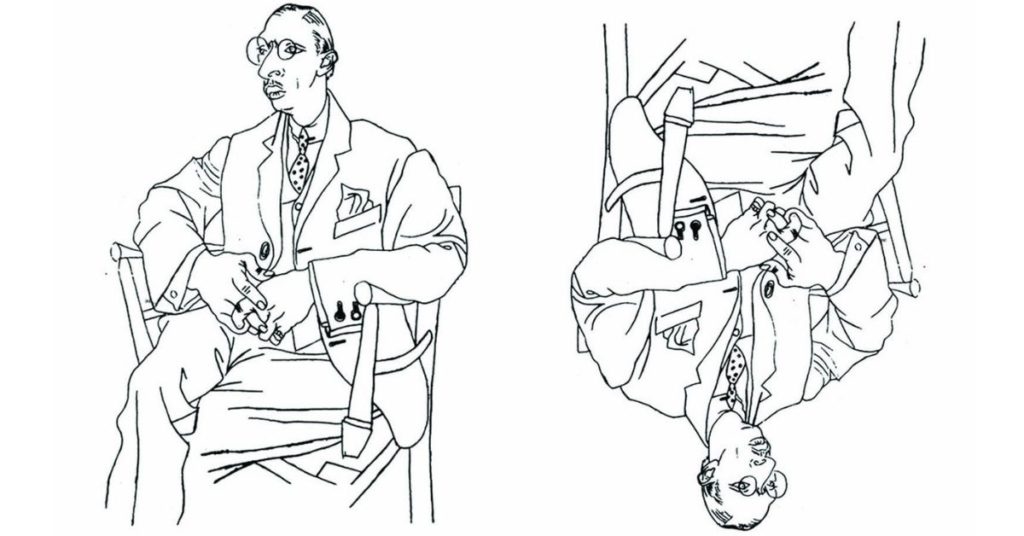
Day 2 – Line variety exercise
Draw an ice rupture where the lines closer to you are thicker. I chose to make the lines inside thinner because they represent light details. This helps create the illusion of depth even though the drawing is 2d.
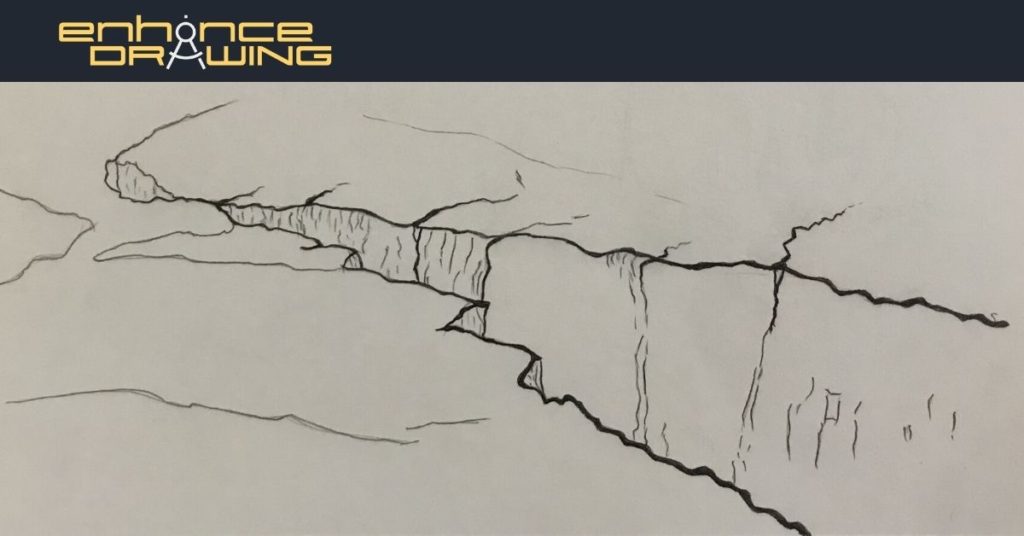
Day 3 – Line Thickness Exercise
Draw this frog and make its contour thicker than the rest of the drawing, just like the picture. This is something you’ll see in many comics or cartoons.

Day 4 – Master Study
An exercise that will help you a lot is to study how other skilled artists draw. Glen Keane is a master everyone should study at least once. Try replicating this Pocahontas drawing, making sure you draw thick lines and thin lines according to the reference.

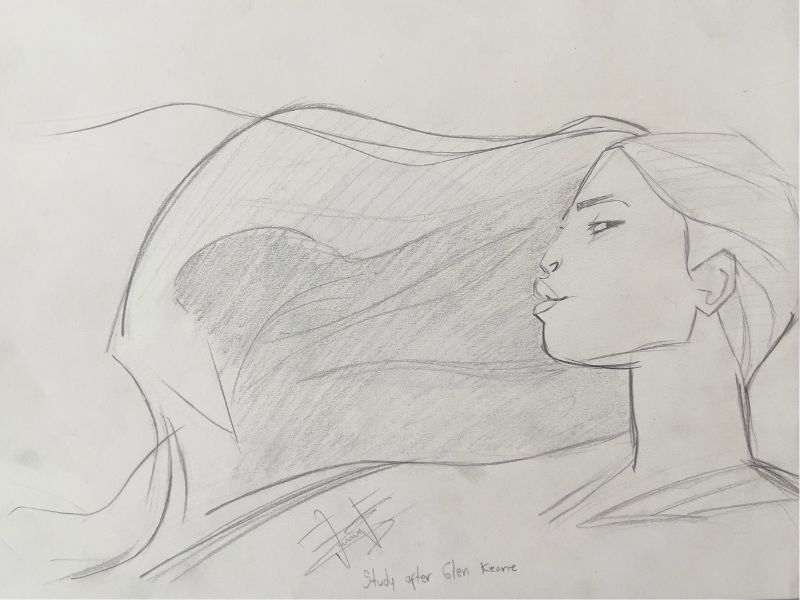
Day 5 – Create your Own Line Quality
Draw this guy from Spirited Away. Notice that the drawing I did has a consistent line thickness and tone, so I want you not to do that and make some lines thicker, thinner, lighter, or darker according to what you want to communicate. Think about what would make this picture look more interesting.
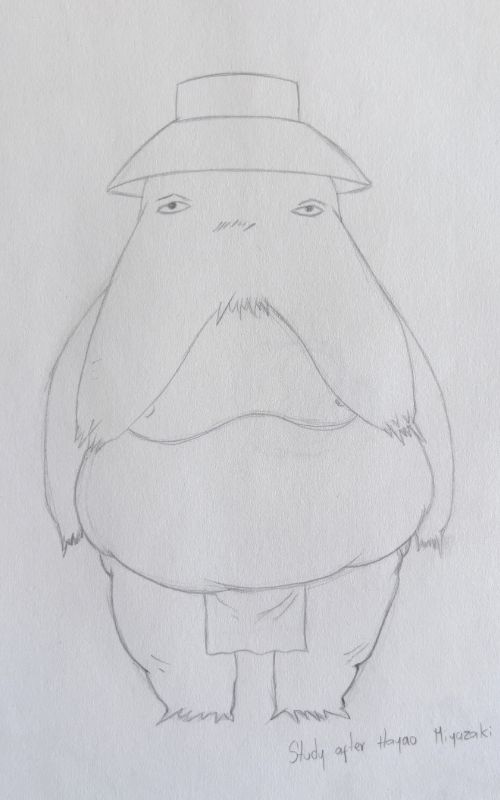
Day 6 – Keep Practicing Creating Your Own Line Quality
Use these dog drawings to create your own line quality. Again, think about what lines to change to make the drawing more interesting.

Day 7 – Study Flamingos
Do quick sketches of flamingos multiple times until you can draw them from memory. They don’t have to be perfect at all.
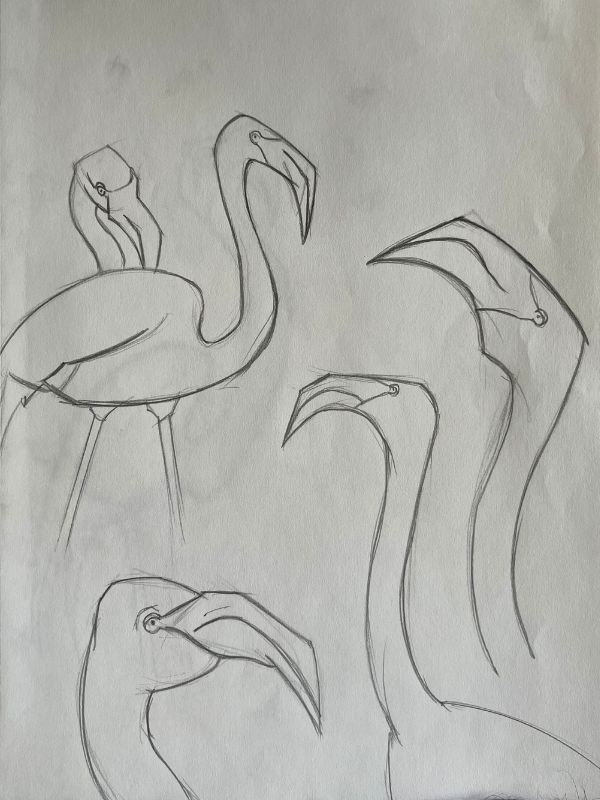
Day 8 – Draw Flamingos From Your Imagination
Using your knowledge about drawing flamingos, try to play with their shapes, exaggerate them and explore different poses. Do a final sketch after you have an idea of what to draw. Making the drawings cartoony will make this exercise much easier.
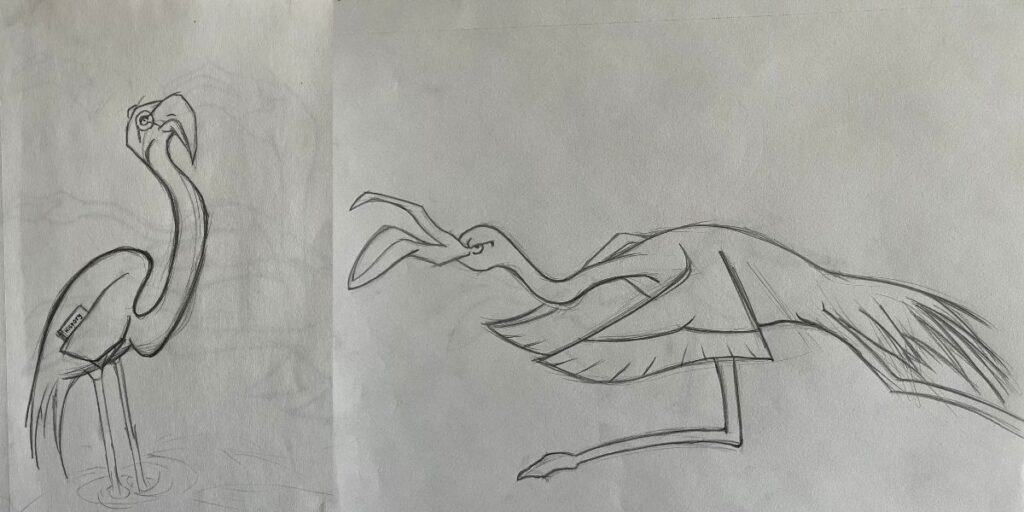
Day 9 – Study Drawing Subjects
Pick another animal and do quick sketches of it multiple times until you can draw it from memory.
Day 10 – Draw From Your Imagination
Draw the animal you picked from your imagination using the knowledge you have about the animal. You can check your sketches and do some more if you need to refresh your memory before drawing from your imagination.
Day 11 – Learn to Simplify With Shapes
Simplify this pig into its basic shapes.
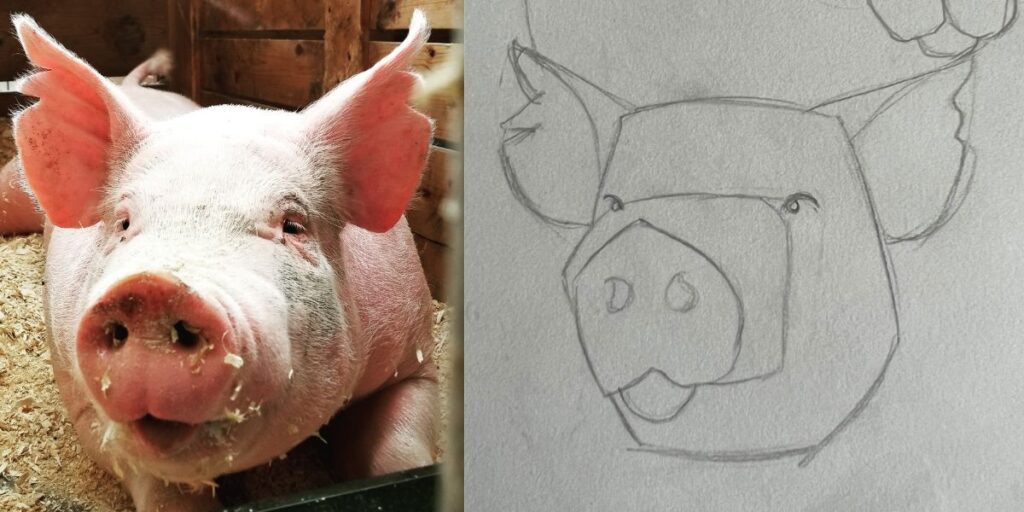
Day 12 – Modify the Shapes to Add Character
Play with the shapes you drew to communicate different expressions. Usually, triangular shapes can indicate aggressiveness, danger, and instability. Rectangular shapes can communicate stability, passive or strong character. Circular shapes can communicate approachability, safety, and cuteness. They communicate hundreds of other things; these are just a few examples.
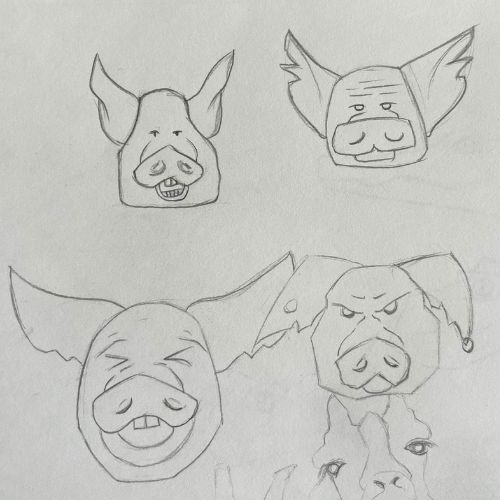
Day 13 – Simplify Another Animal
Repeat the exercise, but you have to pick your own animal this time.
Day 14 – Modify the Shapes to Add Character
Repeat the exercise and explore limitless possibilities!
Day 15 – Practice Technical Drawing Skills – Straight Lines
I know all these drawing exercises are super fun, and you learn a lot from them! But it is crucial to make some space to practice the most technical aspects of drawing occasionally. I practice these as warm-ups before I start to draw, and sometimes I make them extra interesting. Try to make an illustration similar to mine using straight lines only.
Check this blog if you want some tips about drawing better straight lines.
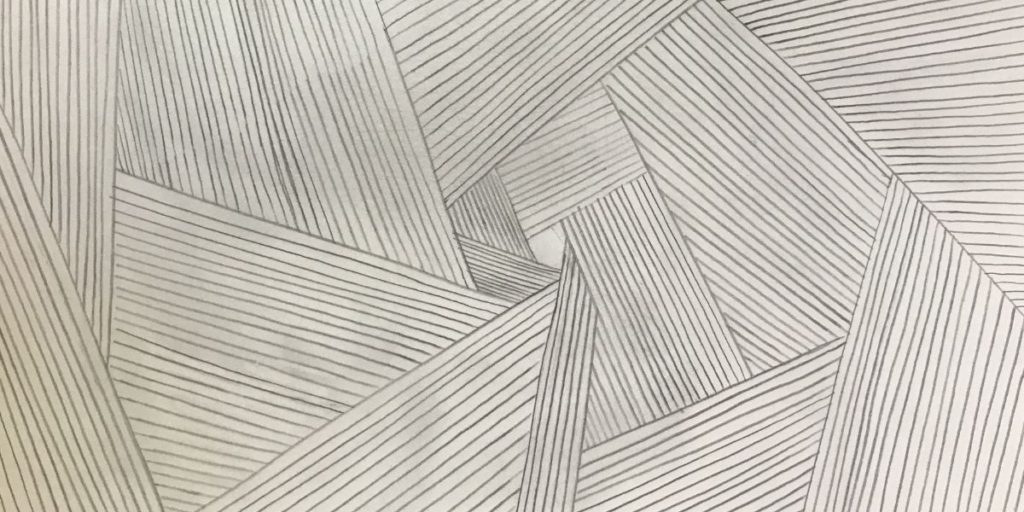
Day 16 – Practice Technical Drawing Skills – Circles
Fill a page with circles. Circles are the most complex figure there is to draw, and it is essential to get familiar with them because they are present in almost every drawing. Here’s a blog about drawing circles that could help you improve at it.
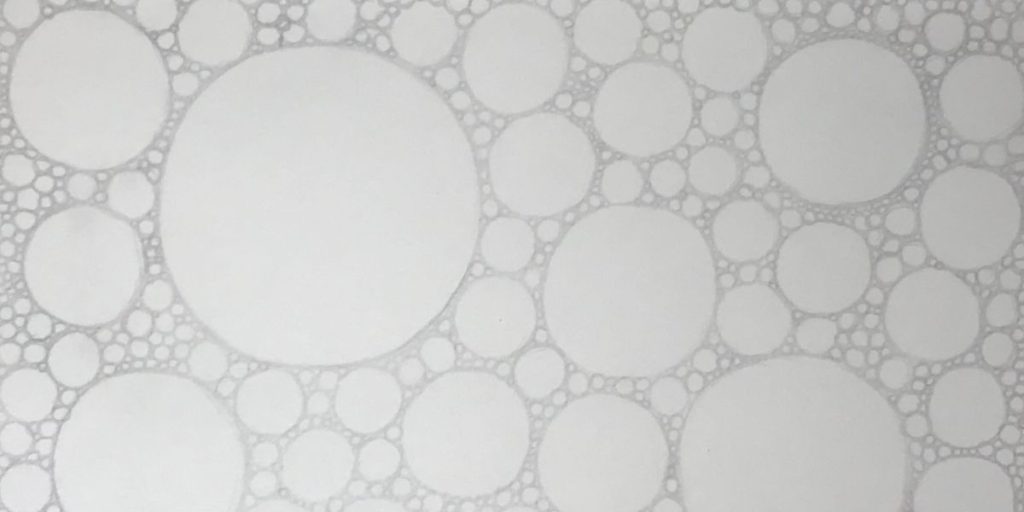
Day 17 – Start Studying The Skull
Learning to draw humans will require studying the skull. Regardless of your style, drawing skulls will help you construct the face and head more easily once you know it. To do it, draw the skull from many different angles without shading or much details. This is how I started studying the skull.
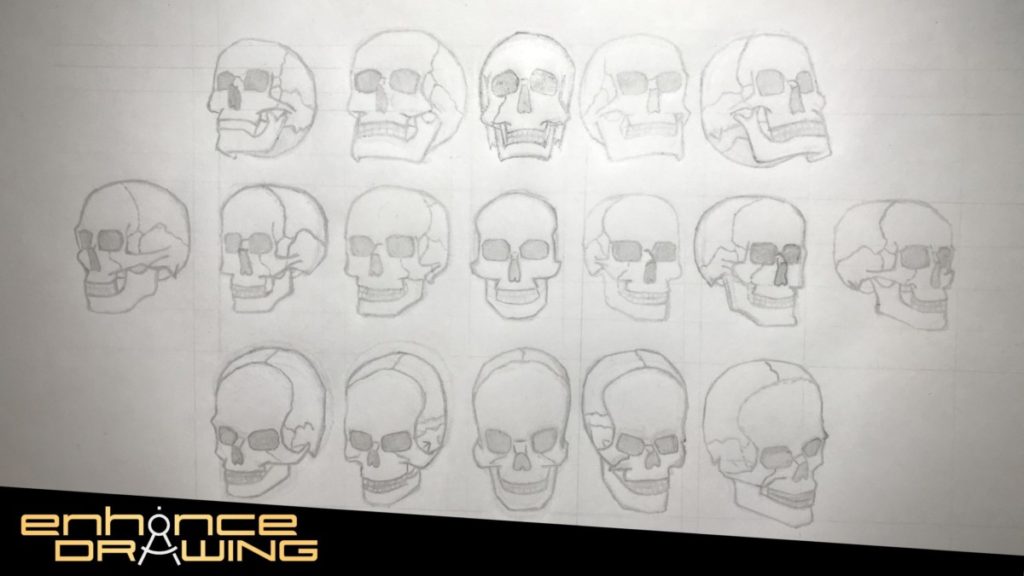
Day 18 – Draw The Same Skull Many Times
Draw the skull from the same angle multiple times until you can draw it from memory. Remember always to use a reference to draw it.
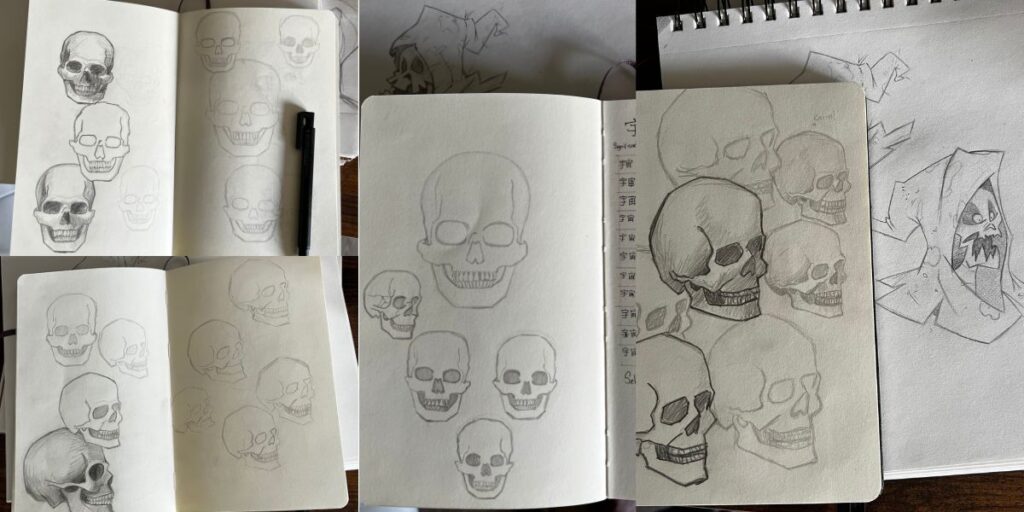
Day 19 – Draw The Skull From Memory.
Now that you have drawn the skull multiple times, you are ready to draw it from memory. Give it a try.
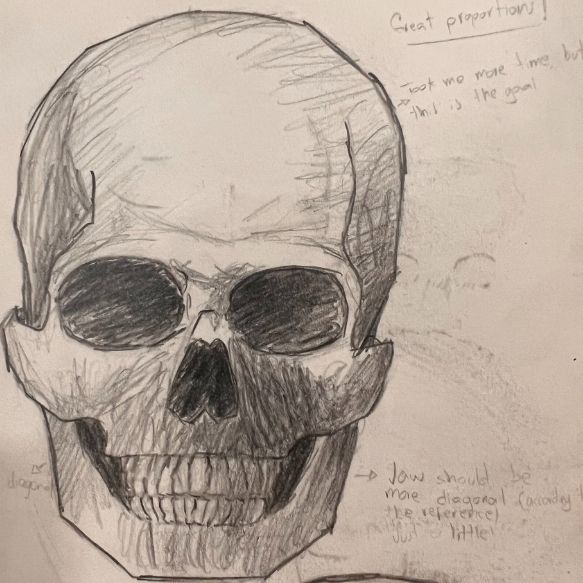
Day 20 – Do Another Master Study
Find an artist you admire, pick an art piece they created and draw it. Pay attention to why you love their art and try to replicate it in your drawing. Try to get into the original artist’s mind and think about how they drew each line. Remember to mimic the line quality; that’s very important! Let their art inspire you to what you will be able to draw if you keep studying.
Day 21 – Free Drawing Session!
You made it this far! You have probably learned a lot from your exercises, so now try to make the drawing you like to make and apply the things you learned so far to them! I like drawing anime, so here’s an anime drawing I did.
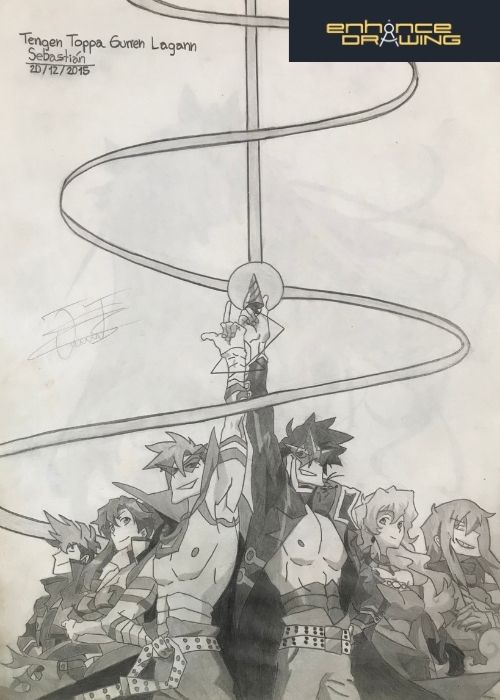
Scientific studies show that people took 18 to 254 days to develop the habit, but that was without following any plan or structure, so make sure to apply the things you learned in this blog to make drawing a habit the fastest way you could do it.
Now that you know how to make drawing a habit, I want to give you some direction and answer a couple of common questions that come with it. It’s great that you created a drawing habit, but how exactly do you commit to continue doing it for years or possibly the rest of your life? And also, would you like to do that?
How Do You Commit To Drawing Every Day?
To commit to drawing every day, you need to have a well-defined end goal with your art. Whether it is to have fun, pursue an artistic career where you work for a company, or create and sell your own work, knowing where you are heading will help reinforce your commitment to drawing daily.
Without some goal, it will be easier for you to drop drawing suddenly. Your goal is personal, and there won’t be right or wrong answers; you just need to have one.
Should You Draw Every Day?
Drawing every day will be very helpful if you’re trying to make it a habit, but it is not required to become a great, skilled artist. Drawing every day will help you improve your technical skills much faster, and as long as you’re not drawing too much that you start feeling burnt out, you’re good to go.
I have a whole blog about determining if you should draw every day because the answer depends on multiple factors, so if you want to find the best option for you, I’d recommend looking at it.
How Many Hours Should You Draw Every Day?
On average, drawing between 2-4 hours a day is more than enough to improve at drawing. Although more hours will help you improve your line work faster, deliberate practice is more important. In most cases, one hour of drawing every day is enough for busy artists.
I also have a blog about finding out the ideal time you should draw every day to become a better artist and succeed in the process. Forcing yourself to draw for longer than you can enjoy can be detrimental to your artistic progress. So, I created a case-by-case chart to help you determine how many hours you should draw every day, according to your persona, and how to increase those hours over time.
Last but not least, thank you for reading, and I hope you the best at achieving your artistic goals!
